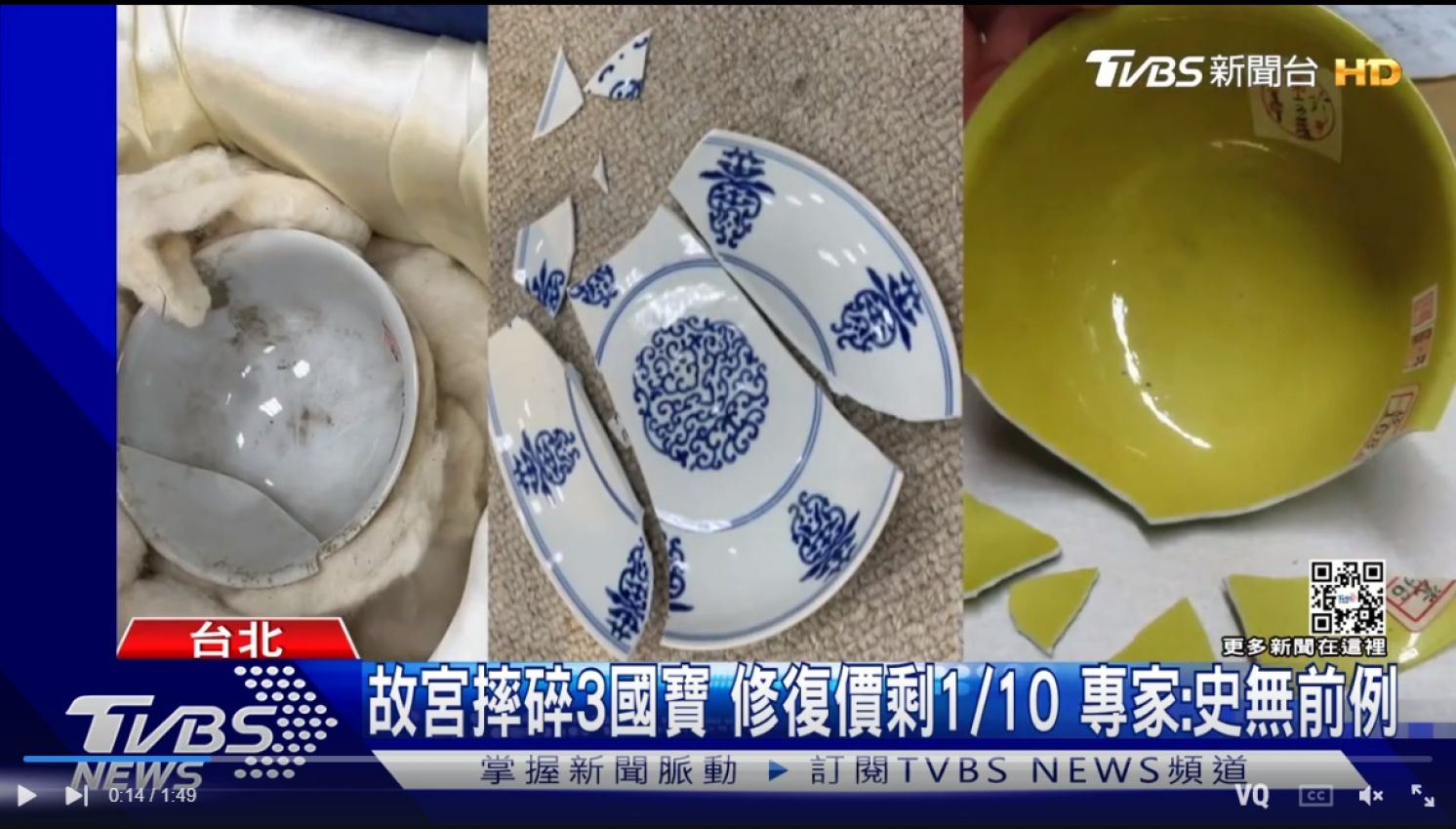
National Treasure Breakage:Tsai Administration Should Explain Clearly
China Times Editorial, October 29, 2022
Three pieces of porcelain treasures, stored in the National Palace Museum (NPM) in Taiwan, had been broken, shocking the world. How incredible! Some questioned curator's unprofessionalism, mismanagement and his political orientation; to make matters worse, it was suspected that those national treasures had been swapped and stolen. All revealed that public trust in the high-echelon leadership had been so much low, especially unrestrained government corruptions during the coronavirus (COVID-19) pandemic, that the swap and sell stories were widely reported across the country.
The truth picture remains to be uncovered. But the NPM has all the time implemented a stringent security management system, which was strictly monitored and controlled under President Chiang Kai-shek rule in a move to prevent the theft of national treasures. Consequently, it is a piece of cake to identify problems and demand accountability.
First, how to access the museum storerooms where the national treasures are located has been quite strict. Each staff member of the NPM who handles artifacts, archives, paintings or calligraphy respectively has his or her authorized access code to the designated storeroom. Every time anyone who enters shall leave two records, one is the electronic record of the swipe card, and the other one the record of his or her own signature; therefore, the entrant would leave two records which could be cross-checked. Of course, an authorized staff member could also bring someone in, who has to follow the same inflexible standard operating procedures.
Moreover, the curator does not have the authority to enter the storeroom alone, so do others. Authorized personnel should enter together in the company of a collection handler. That is to say, there would be at least three people present to move the collection item. Then, it is traceable to identify who moved it by cross-examining them. To put it bluntly, the theft suspect can be identified and located through the said stringent security management system in the Museum. It was up to Director Wu Mi-cha of the National Palace Museum to lead a “thorough investigation”.
In other words, two pieces of porcelain treasure were broken in February last year and April this year. It was noted that there were two overall inventories of collection made respectively by two former directors Chin Hsiao-yi and Chou Kung-shin. Plus, Chou left color photo of collection files. We could carry out an inventory review to make comparison, while pursuing responsibility. We could perhaps know whether there was damage back then. If there was no damage, the questions raised were who entered the storerooms and who touched the treasures in the past few years. In addition, who destroyed or tampered with collection item should be also traceable.
Judging from the said process, the damage of the first two pieces of porcelain treasure could be traced. If a collection item was tampered with by someone who touched it, then it should be possible to identify who was responsible. If it was spontaneously broken without being moved, it may have cracked for rather a long time. In brief, it is time to take stock in order to see how much we can preserve and protect collection in a correct and practical way.
Regarding the process of organizing and sorting the collection items on May 19 this year, the Qianlong-era blue and white flower plate from the Qing Dynasty unfortunately fell and damaged due to alleged negligence. It was really an anecdote of a world-class museum in which damage of porcelain treasure stemmed from human error. As for why this was so, and whether it was related to understaffing and malmanagement, this was what Director Wu should be held accountable. In a word, Wu could not pretend that nothing happened, and instead this curator should actively and exhaustively investigate all violations and shoulder responsibility before he can clearly explain to people on Taiwan.
What Taiwanese couldn’t understand was that the cultural relics of the NPM had been transported thousands of miles overland during the Anti-Japanese War when the Japanese military planes drop bombs while during the Chinse Civil War, ships carrying the said collection had navigated the turbulent waters, it was amazing that all of which were well kept without being damaged all the way to Taiwan. On the other hand, in time of peace in Taiwan, we found it surprising and disappointed that three national treasures were damaged in two years in a row. It could be questioned that Director Wu, political appointee of the ruling Democratic Progressive Party (DPP), lacks professionalism and toes the party lines. If he does not seek to take responsibility this time, then it would be exceedingly hard to convince all the people by reasoning.
From: https://www.chinatimes.com/opinion/20221029003036-262101?chdtv